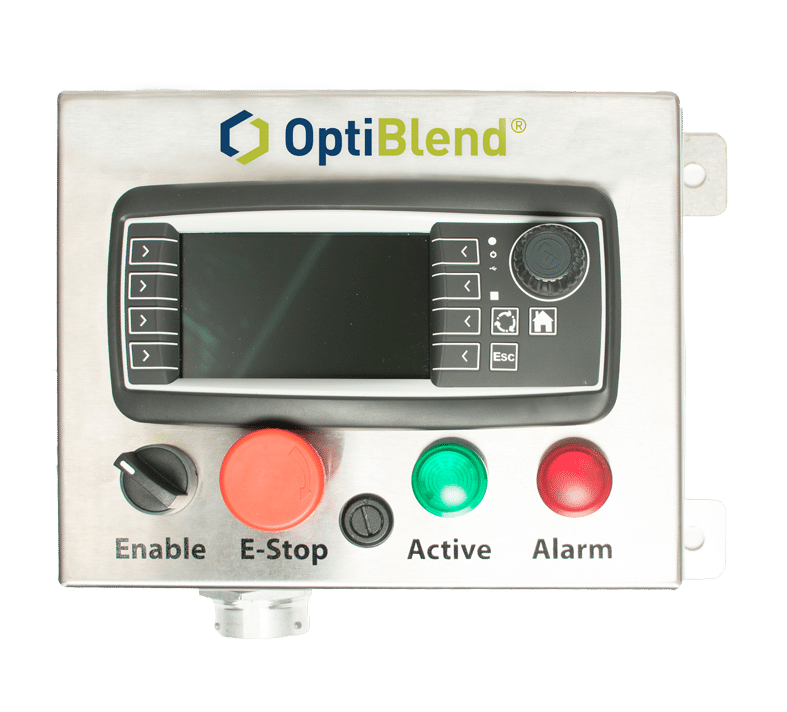Optiblend : Bi-Fuel Engine
Bi-Fuel Engine Conversion
Power demand in off-grid operations can be high, and operating diesel-powered backup generators can cause higher operational costs, especially now when the US is reeling in a diesel crisis. Bi-fuel engine conversions can allow you to use a cheaper alternative fuel to displace the diesel, lowering your fuel storage and management costs. Additionally, bi-fuel configurations reduce the overall greenhouse gas (GHG) emissions compared to engines that run on diesel alone.
In this article, we will explain what a bi-fuel engine conversion is, how it works, and the results you can expect after a bi-fuel conversion.
What is Bi-Fuel?
Bi-Fuel engine conversion involves modifying or retrofitting an engine to run on an additional type of fuel as well as diesel. Bi-fuel engines can use many different types of gaseous fuels in addition to diesel, including propane, natural gas, LNG, CNG, field gas, etc.
Most people use the terms “bi-fuel” and “dual-fuel” interchangeably, but there’s a slight difference. While they both use two fuel sources, a dual-fuel design refers to a configuration where the engine uses a blend of both fuels.
What Engines Can Use Bi-Fuel?
A bi-fuel configuration is often used on stationary or mobile diesel electric generators. One reason diesel engines are a top choice for bi-fuel applications is their performance. Diesel engines are known for their durability, and diesel fuel provides a high power density.
However, converting the engine using a bi-fuel conversion kit allows for a larger displacement of diesel fuel by natural gas (or other gaseous fuel), thus delivering the same power output as a diesel-only engine while consuming less diesel fuel.
Additionally, bi-fuel engines have a relatively higher transient response, which is an engine’s ability to respond to varying power demands of an operation. Oil and gas applications require optimum transient capabilities that conventional diesel-only engines sometimes struggle to accommodate.
How Does the Conversion Work?
The engine can use diesel or natural gas (or other gaseous fuel), or a combination of the two. While diesel is often stored on-site, the gaseous fuel source is either piped in or stored on-site. The Bi-fuel conversion kit consists of several components, including:
- Fuel injection system for the diesel fuel
- Electronic Control Modules (ECMs) for both fuels
- High-pressure regulator
- Zero-pressure regulator
- Manual shut-off
- Fuel filters (for both fuels)
- Natural gas sensors
Pros and Cons of Bi-Fuel
Operating a bi-fuel standby generator has its advantages and disadvantages.
Pros
- Reduced diesel consumption due to a larger displacement rate
- Bi-fuel systems have cleaner emissions
- Has a higher transient response
- Lower CO2 and NOx emissions
- Natural gas costs much less than diesel
Cons
- Gaseous fuel may not be available on a specific site
- Slightly more complicated air intake system
Does Converting My Diesel Engine to a Bi-Fuel Make Sense?
With the continuing diesel shortage (and the consequent increase in fuel prices), bi-fuel engines can significantly lower your budget for fuel because natural gas is cheaper. Therefore, converting your engine to incorporate a cheaper fuel source makes sense from an economic perspective. Additionally, you’ll reduce your environmental footprint since bi-fuel significantly reduce NOx and CO2 emissions over conventional diesel-only operations.
At OptiBlend®, we provide high-quality bi-fuel conversion kits with a high focus on environmental sustainability and cost reduction. OptiBlend® bi-fuel uses innovative technology that allows your conventional diesel generator to run natural as a supplemental fuel source without modifying the engine’s internal components. As a result, you enjoy cost-saving opportunities, extended runtime, and lower emissions. Contact us today for a quote or more information on our products and services.
 Bi-Fuel Diesel Engine Conversion - OptiBlend bi-fuel retrofit system uses a gas train & electronic software device to constantly monitor engine performance & gaseous flow for safe & efficient operation.
Bi-Fuel Diesel Engine Conversion - OptiBlend bi-fuel retrofit system uses a gas train & electronic software device to constantly monitor engine performance & gaseous flow for safe & efficient operation.  Optiblend Bi-Fuel Diesel Engine Conversion - Adding a secondary gaseous fuel such as natural gas, propane, methane or hydrogen extends runtime, lowers operating costs & reduce CO2. ROI happens in weeks, not years.
Optiblend Bi-Fuel Diesel Engine Conversion - Adding a secondary gaseous fuel such as natural gas, propane, methane or hydrogen extends runtime, lowers operating costs & reduce CO2. ROI happens in weeks, not years.  Bi Fuel System Components - OptiBlend bi-fuel retrofit system uses a gas train & electronic software device to constantly monitor engine performance & gaseous flow for safe & efficient operation.
Bi Fuel System Components - OptiBlend bi-fuel retrofit system uses a gas train & electronic software device to constantly monitor engine performance & gaseous flow for safe & efficient operation.
 Dual Fuel : Diesel – Natural Gas Conversion Kits - Lower fuel cost. Improved NoX…
Dual Fuel : Diesel – Natural Gas Conversion Kits - Lower fuel cost. Improved NoX…  Bi-Fuel Diesel Engine Dealers - OptiBlend bi-fuel technology works with…
Bi-Fuel Diesel Engine Dealers - OptiBlend bi-fuel technology works with…  Diesel Equipment : Bi-Fuel Conversion - An OptiBlend dual fuel retrofit…
Diesel Equipment : Bi-Fuel Conversion - An OptiBlend dual fuel retrofit…  Bi-Fuel Diesel Engine Conversion - OptiBlend's dual fuel diesel engine…
Bi-Fuel Diesel Engine Conversion - OptiBlend's dual fuel diesel engine…  Bi-Fuel Diesel Natural Gas Power Generator Conversion - OptiBlend dual fuel retrofit systems…
Bi-Fuel Diesel Natural Gas Power Generator Conversion - OptiBlend dual fuel retrofit systems…  Bi Fuel Gas Train - OptiBlend dual fuel gas train…
Bi Fuel Gas Train - OptiBlend dual fuel gas train…  Bi Fuel Air Gas Mixer Valve (AGM) - OptiBlend dual fuel conversion uses…
Bi Fuel Air Gas Mixer Valve (AGM) - OptiBlend dual fuel conversion uses…  Bi-Fuel Control Valve - OptiBlend dual fuel conversion kits…
Bi-Fuel Control Valve - OptiBlend dual fuel conversion kits…  Bi-Fuel Control Panel - OptiBlend dual fuel conversion kits…
Bi-Fuel Control Panel - OptiBlend dual fuel conversion kits…



